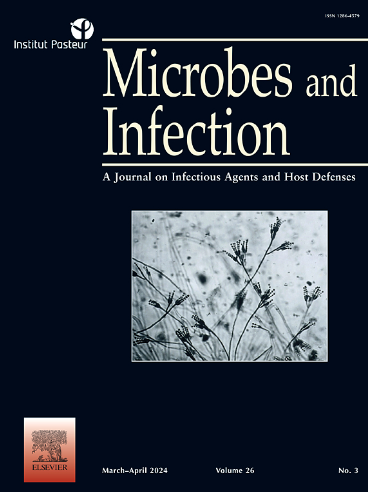Molecular dissection of HERV-W dependent microglial- and astroglial cell polarization
IF 2.7
4区 医学
Q3 IMMUNOLOGY
引用次数: 0
Abstract
The endogenous retrovirus type W (HERV-W) is a human-specific entity, which was initially discovered in multiple sclerosis (MS) patient derived cells. We initially found that the HERV-W envelope (ENV) protein negatively affects oligodendrogenesis and controls microglial cell polarization towards a myelinated axon associated and damaging phenotype. Such first functional assessments were conducted ex vivo, given the human-specific origin of HERV-W. Recent experimental evidence gathered on a novel transgenic mouse model, mimicking activation and expression of the HERV-W ENV protein, revealed that all glial cell types are impacted and that cellular fates, differentiation, and functions were changed. In order to identify HERV-W-specific signatures in glial cells, the current study analyzed the transcriptome of ENV protein stimulated microglial- and astroglial cells and compared the transcriptomic signatures to lipopolysaccharide (LPS) stimulated cells, owing to the fact that both ligands can activate toll-like receptor-4 (TLR-4). Additionally, a comparison between published disease associated glial signatures and the transcriptome of HERV-W ENV stimulated glial cells was conducted. We, therefore, provide here for the first time a detailed molecular description of specific HERV-W ENV evoked effects on those glial cell populations that are involved in smoldering neuroinflammatory processes relevant for progression of neurodegenerative diseases.
依赖于 HERV-W 的小胶质细胞和星形胶质细胞极化的分子剖析。
内源性逆转录病毒 W 型(HERV-W)是一种人类特异性实体,最初是在多发性硬化症(MS)患者衍生细胞中发现的。我们最初发现,HERV-W 的包膜(ENV)蛋白会对少突发生产生负面影响,并控制小胶质细胞极化为与髓鞘轴突相关的损伤表型。鉴于 HERV-W 源自人类特异性,这些首次功能评估是在体外进行的。最近在一种新型转基因小鼠模型上收集的实验证据显示,模拟 HERV-W ENV 蛋白的激活和表达,所有神经胶质细胞类型都受到了影响,细胞的命运、分化和功能都发生了改变。为了确定神经胶质细胞中 HERV-W 的特异性特征,本研究分析了 ENV 蛋白刺激的小胶质细胞和星形胶质细胞的转录组,并将转录组特征与脂多糖(LPS)刺激的细胞进行了比较,因为这两种配体都能激活收费样受体-4(TLR-4)。此外,我们还对已发表的与疾病相关的神经胶质细胞特征与 HERV-W ENV 刺激的神经胶质细胞转录组进行了比较。因此,我们首次从分子角度详细描述了 HERV-W ENV 对神经胶质细胞群的特定诱发效应,这些神经胶质细胞群参与了与神经退行性疾病进展相关的神经炎症过程。
本文章由计算机程序翻译,如有差异,请以英文原文为准。
求助全文
约1分钟内获得全文
求助全文
来源期刊

Microbes and Infection
医学-病毒学
CiteScore
12.60
自引率
1.70%
发文量
90
审稿时长
40 days
期刊介绍:
Microbes and Infection publishes 10 peer-reviewed issues per year in all fields of infection and immunity, covering the different levels of host-microbe interactions, and in particular:
the molecular biology and cell biology of the crosstalk between hosts (human and model organisms) and microbes (viruses, bacteria, parasites and fungi), including molecular virulence and evasion mechanisms.
the immune response to infection, including pathogenesis and host susceptibility.
emerging human infectious diseases.
systems immunology.
molecular epidemiology/genetics of host pathogen interactions.
microbiota and host "interactions".
vaccine development, including novel strategies and adjuvants.
Clinical studies, accounts of clinical trials and biomarker studies in infectious diseases are within the scope of the journal.
Microbes and Infection publishes articles on human pathogens or pathogens of model systems. However, articles on other microbes can be published if they contribute to our understanding of basic mechanisms of host-pathogen interactions. Purely descriptive and preliminary studies are discouraged.
 求助内容:
求助内容: 应助结果提醒方式:
应助结果提醒方式:


